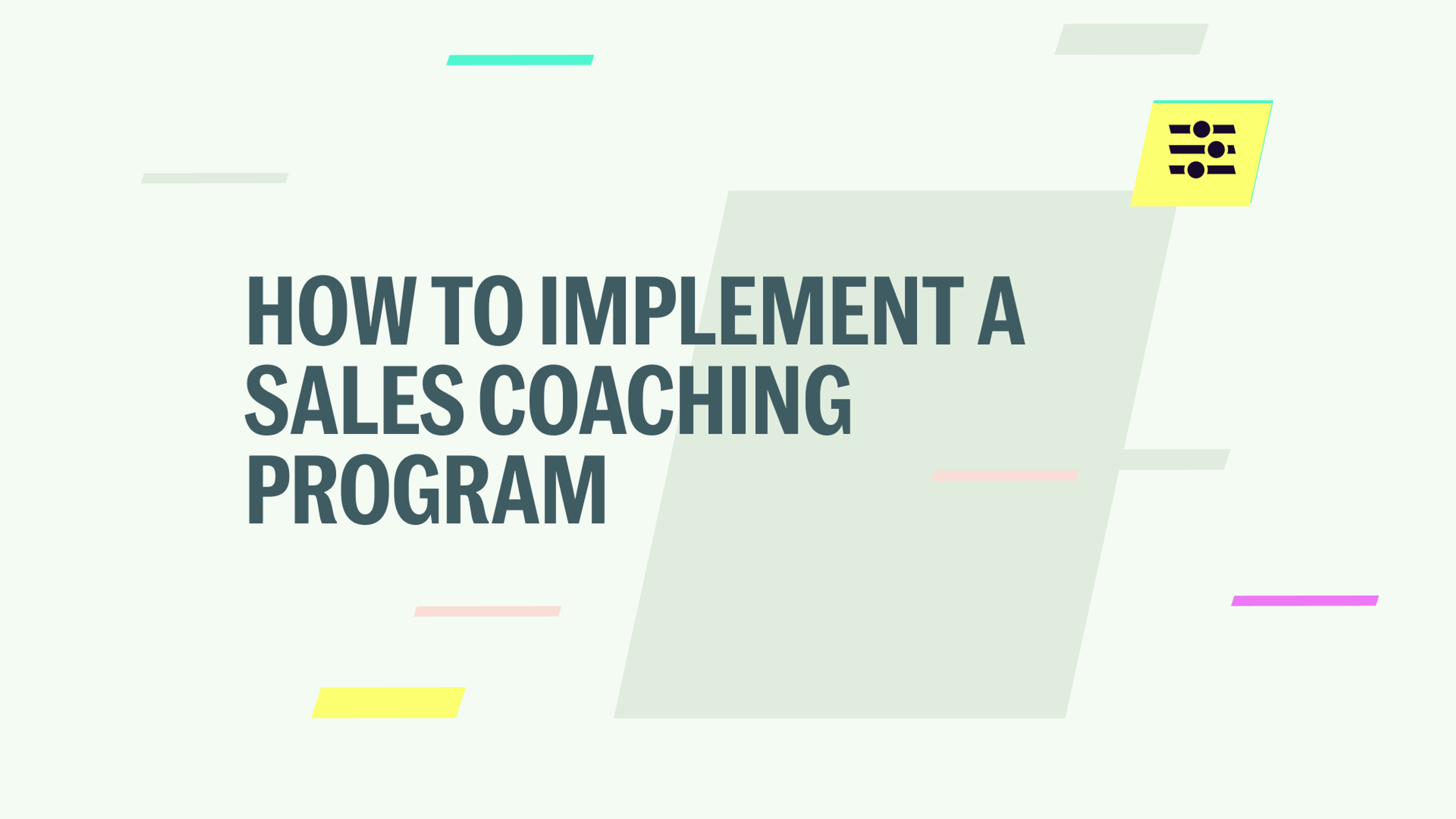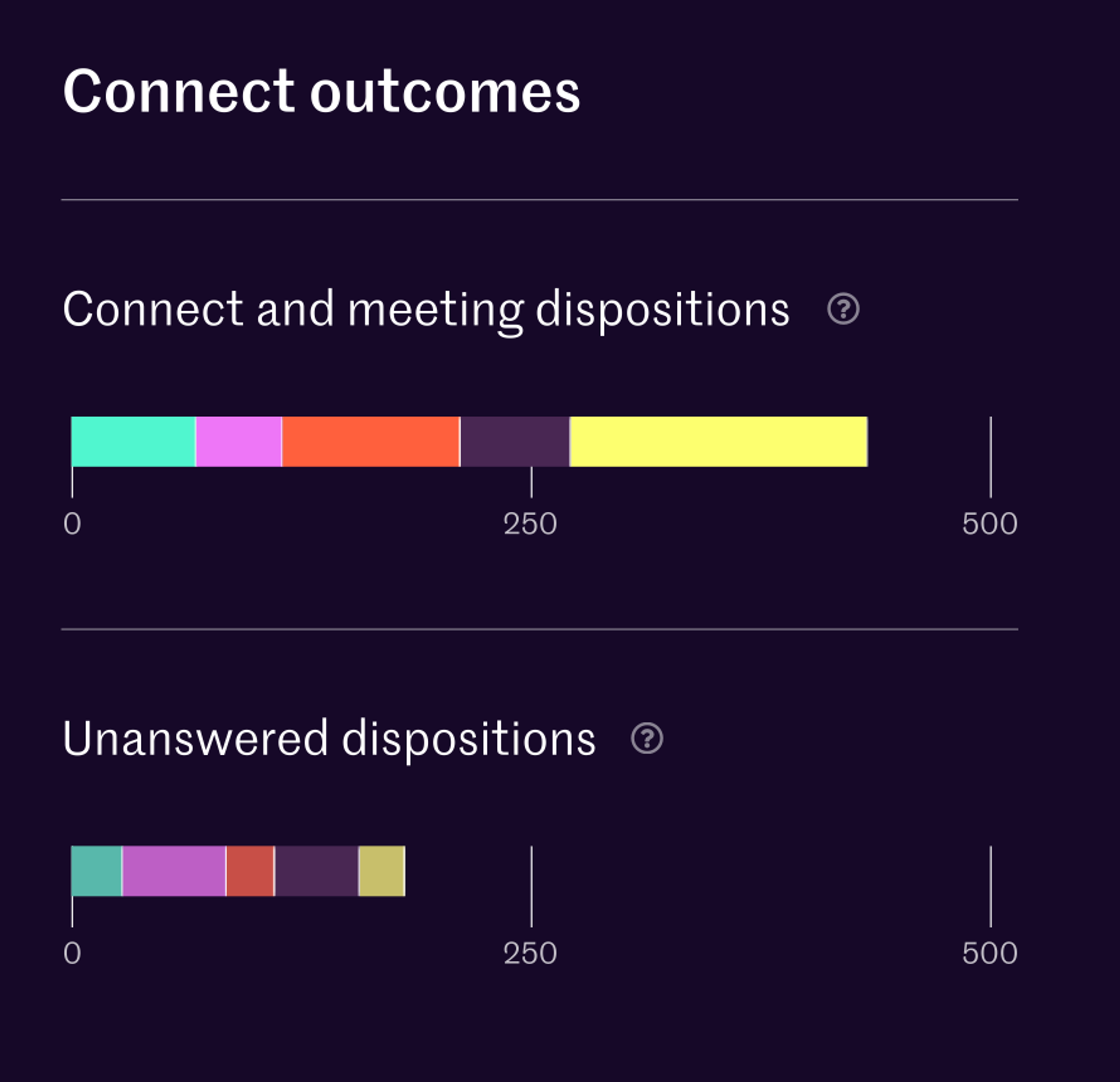How to Implement a Sales Coaching Program in 8 Steps


66% of sales managers claim customer acquisition costs increased in the past 12 months, forcing teams to switch up their prospecting tactics. This demonstrates how the sales industry has changed significantly in the past few years, requiring leaders and reps to adapt quickly.
Similarly, our2024 State of Sales Report found that 80% of teams said they’d implemented AI-powered tools in the last year, which can require additional training.
Strategies evolve, and tech stacks change, and it’s essential for sales leaders to keep their staff up-to-date on training. In addition to providing training on new updates, ongoing sales coaching supports general skill development to help reps excel in their positions.
To help your managers leverage the benefits of sales training, we discuss how to launch a successful coaching program in eight steps.
Increase win rates by upskilling your sales team
Offer comprehensive individual and group sales training for sales representatives with Orum.
Request a demo today
Define your sales objectives
Your sales objectives are specific, measurable goals that you want to prioritize. They’re often tied directly to overall business goals and should influence your sales strategy. Understanding which objectives you want to prioritize can help you assess your team’s current performance and determine what coaching your staff needs.
Examples of sales objectives and their key performance indicators (KPIs) include:
- Increased pipeline generation, which may include tracking metrics like number of cold calls and number of meetings booked
- Reduced sales cycle length, which should involve tracking metrics like average time to close and total sales cycle lengths
- Increased deals won, which might mean tracking metrics like close rates, win/loss rates, number of deals closed, and average value of closed deals
Remember: You’ll want to track these KPIs for individual sales professionals and your teams before you launch the program. You also want to monitor these metrics after you launch to ensure your team receives the training it needs.
2. Assess current sales performance
Before launching your sales coaching program, you must understand your team’s strengths and weaknesses.
Compare team and individual sales rep data against your sales objectives to identify the most efficient training types. You might have an individual rep who could benefit from one-on-one coaching to better qualify leads, for example, but most of the team could benefit more from training on how to book more meetings.
It’s also important to review your existing sales processes and how they impact performance metrics.
For example, you might ask your team to book meetings too quickly, failing to research and effectively qualify leads properly. This can result in poorer personalization and fewer meetings booked. Or, you might discover you’ve instructed your team to wait too long after initial contact to follow up, causing prospects to lose interest.
During this process, collect feedback from sales team members. Give them the option to share feedback in open meetings, but also send an anonymous survey to learn more about how your reps feel about processes, existing training, and recommended sales strategies.
After collecting and reviewing the data, you can identify team strengths and areas for improvement to better shape your sales call coaching program.
3. Understand reps’ experience level
When evaluating your reps’ performance, it’s important to consider their experience levels.
For example, sales development representatives (SDRs) often have less experience than account executives or lower-funnel sales staff. These team members likely have more experience working with prospects early in the process, as they may not have been trained to close deals passed on to account executives.
Understanding who you’re coaching can help you tailor training to their needs. A greener salesperson might need help with soft skills like active listening or asking qualifying questions on cold calls. Meanwhile, more experienced sales team members could benefit from training around advanced closing techniques.
However, if you offer advanced training around closing techniques to green reps who haven’t learned how to understand a customer’s needs, you might not see an improvement in overall rep performance. They can’t close a sale if the prospect drops out of the pipeline early.
4. Select coaching methods
You need to implement different types of sales training methods depending on multiple factors, including:
- The deviations in your reps’ individual sales skills
- The types of topics you need to offer
- The kind of training that your team is most responsive to
- The work environment your team works in (managing remote employees, for example))
There are typically a few common coaching methods to consider.
One-on-one coaching
One-on-one coaching involves a sales manager or experienced account executive partnering with a rep to provide individual training.
Some sales managers create coaching plans for each sales rep, offering upskilling opportunities and training for skill development. While it can be more time-consuming for managers to implement, it’s best to ensure each team member has the training and resources they need to excel.
One-on-one coaching often includes:
- Addressing a potential sales rep’s particular habits that impact their performance, like asking for a sale too early or struggling to prioritize the right leads
- Providing training on specific sales techniques, like de-escalation role-playing or sales closing examples
- Allowing the rep to ask questions about topics they’re unsure about
- Offering third-party training through conferences, courses, or boot camps
Group training
Group training is a highly efficient way to help your entire team learn new strategies, stay updated on product knowledge, and practice sales skills together. While it is a good way to level up the entire team, monitoring individual rep performance is important to ensure they don’t need additional support.
Group training could include:
- Having multiple team members listen in on a real client conversation for sales call coaching, giving them the option to provide feedback in real-time
- Creating presentations with the product development team to educate reps about product changes
- Holding meetings where you discuss new sales processes or strategies, like overcoming objections or follow-up practices
Orum can facilitate group training. Our Virtual Salesfloor allows multiple team members to join calls, listen quietly or participate, and provide feedback. Using real-world scenarios and feedback to improve sales skills, you can create an immersive learning environment that accelerates skill development and enhances team collaboration.
Some managers even set up Virtual Salesfloors on their own sales calls, allowing team members to see sales techniques in practice and provide feedback to foster a feedback culture. This is a hands-on sales call coaching tactic that can drive meaningful improvement in your team’s performance.

Role-playing
Role-playing is an excellent way to facilitate skill development and put those new skills into practice. It’s most useful when working on specific skills, like overcoming objections, as opposed to larger skill sets, like researching prospects. As a result, it’s one of the most common sales coaching strategies.
While some sales reps may be uncomfortable with role-playing, it can be one of the most useful ways to provide feedback as team members learn new skills before setting them loose on sales calls.
It can be an important part of one-on-one training. It’s also a good option for group training—allowing other team members to provide feedback.
5. Develop coaching content
Once you know what types of training you need to offer, you can develop a customized coaching curriculum or framework tailored to your team’s needs.
Your coaching curriculum should include the following:
- A breakdown of essential topics you want to create training for
- The types of training you plan to use to teach these topics
- How to assess upskilling and training efficiency
- The resources and content you’ll need to complete the training
Then, you can start creating the coaching content itself. The coaching content can involve a variety of instruction and training strategies to best educate your team. Examples include:
- Slideshows or webinars that provide detailed breakdowns of specific topics, like how to decrease ramp-up time with automation
- Summaries of phone call recordings that your team can review to learn from
- Lists of common customer objections, along with types of responses that your team can use to overcome them (which can be practiced through role-playing)
- Competitor battle cards, which can be used in group training to educate team members and later used as resources to improve close rates
Keep in mind that your sales processes may change over time. In our 2024 State of Sales Report, 53% of sales leaders said account management and customer success teams now generate the most pipeline, marking a change from recent years.
6. Train sales coaches
Sales managers and experienced sales reps can act as sales coaches, and it’s important to train them to coach your team effectively. For example, someone may be a top sales performer but needs sales coaching tips to train other salespeople effectively.
Effective sales coaches should be the following:
- Empathetic and patient, which can help team members feel more comfortable asking questions and potentially making mistakes during training
- Skilled communicators who can explain ideas well
- Comfortable leading groups through training exercises
- Familiar with the sales coaching software you’re using
Provide resources and ongoing support for your leaders, including regular training on sales coaching techniques. This can continually improve the quality of your coaching program.
7. Launch the program
Rolling out your coaching program will typically be a multi-step process. You’ll need to do the following:
- Choose times that work for your staff. If your team members are likely to take Fridays off, for example, or half your staff starts their day late to work evenings, you likely won’t want to book the training for 9 AM Friday mornings.
- Space out your training. Most team members still need to maintain relationships and keep generating new pipeline, so you likely don’t want to shut down full operations for an entire week. Instead, consider hosting new training biweekly or even monthly, which can keep the pace sustainable and give team members time to practice new skills as they go.
- Announce the new coaching program. Explain the program's objectives and when it will begin to the sales team. Answer any questions your team has to increase transparency, which can help promote buy-in.
- Set timelines for initial coaching sessions. Let your team know when coaching will happen so they can plan their schedules accordingly.
- Let the team know you want ongoing feedback. Your team members may have initial feedback, including suggestions for additional training. They might also feel more enthusiastic about the coming training, knowing they’ll get to weigh in on future coaching sessions.
8. Monitor progress and gather feedback
As your sales coaching program begins, use sales analytics tools to measure the effectiveness of your coaching program. There’s little point in putting effort into training that doesn’t provide meaningful results, for example, and you might find that certain types of training are more effective than others.
If you offer training on finding better prospects, for example, you should see metrics like meetings booked or qualified leads increasing several weeks after the training begins.
You can use Orum’s Analytics to track team and individual rep performance. This performance data is also useful to identify new training opportunities and areas for improvement, such as discovering new ways to supercharge your existing sales processes. You can leverage this information to improve pipeline generation and the number of deals closed.
For instance, let's say Orum's Analytics reveals that your team is great at initial outreach but struggles to convert leads into qualified opportunities during follow-up calls. By analyzing individual performance, you notice that certain reps consistently get stuck on pricing discussions, leading to stalled conversations. With this data, you can identify a common gap in handling pricing objections and create targeted training around that specific issue.

Adapt your coaching initiatives as needed. Role-playing may work for some team members, while others may prefer to watch virtual sales calls to see real-life examples. Make sure you encourage your reps to share constructive feedback on how the training did or did not work for them so you can better facilitate their skill set development.
By tracking team performance and collecting ongoing feedback, you can continually improve your coaching sessions and generate more pipeline effectively.
Supporting your sales team with improved coaching
Each sales team is unique, so finding the right training techniques that work for your reps is essential. While the coaching program you launch should be based on best practices and tailored to your team, tracking sales analytics and collecting team feedback can help you improve the program—and its results—long-term.
Orum offers advanced sales coaching software to help your team reach new levels—and increase their win rate. Use our Analytics to identify training needs, and leverage our Virtual Salesfloor to host coaching on real sales calls in real time. These tools can help you go beyond theoretical best practices, giving real-world training for improved skill development.
Create strong sales coaching programs through Orum
Develop comprehensive team training and personalized one-on-one coaching with real-time feedback and analytics
Request a demo today
Frequently asked questions about sales call coaching
What's the best sales call monitoring software?
While the best call monitoring software may depend on your needs, many sales leaders prefer Orum. Orum offers advanced analytics regarding sales rep performance and progress, along with Virtual Salesfloor features to provide group training and real-time feedback on actual sales calls.
What is inside sales call coaching?
Inside sales coaching provides training to inside sales representatives that improves their sales skills and performance. Inside sales reps typically sell from their home office or employer’s office, as opposed to face-to-face meetings.
Increase win rates by upskilling your sales team Offer comprehensive individual and group sales training for sales representatives with Orum. Request a demo today





